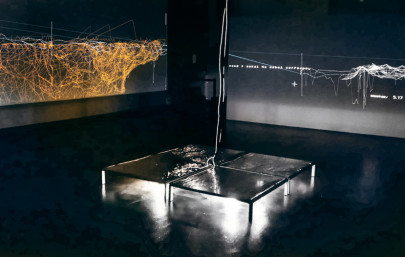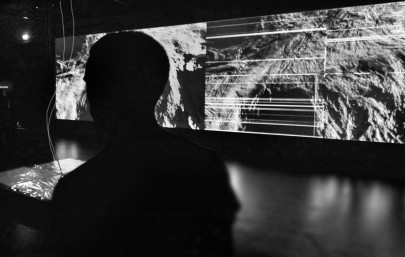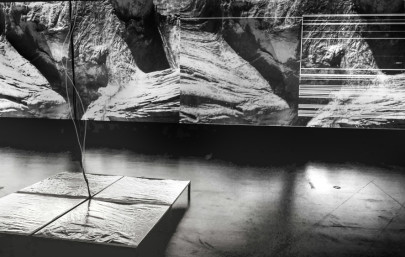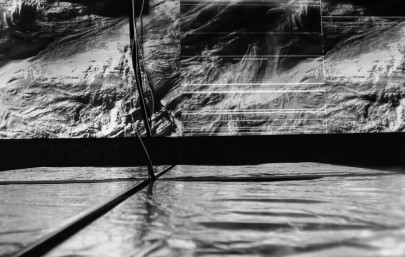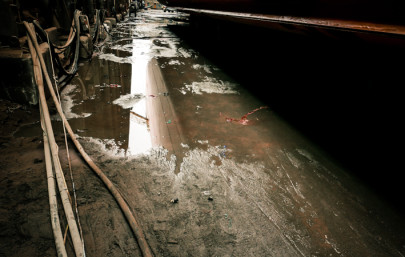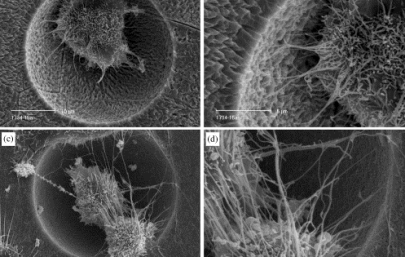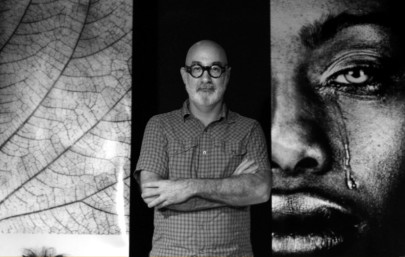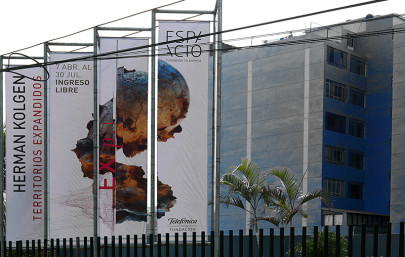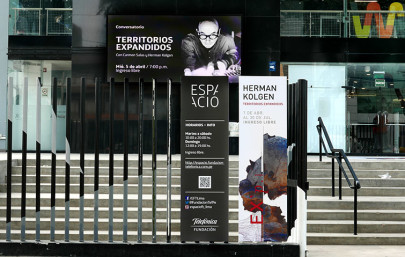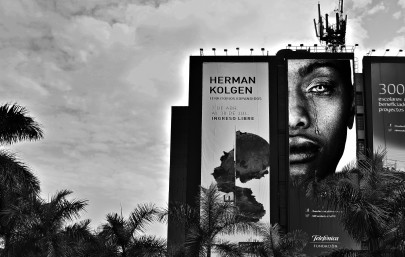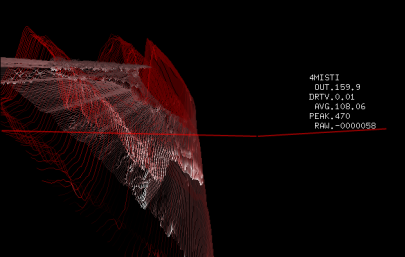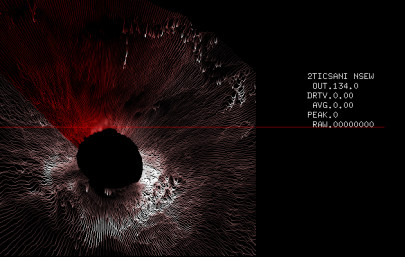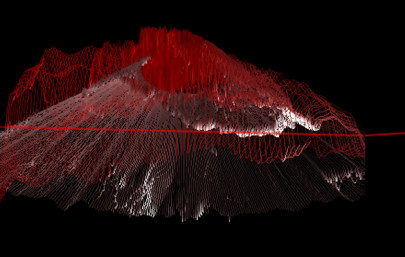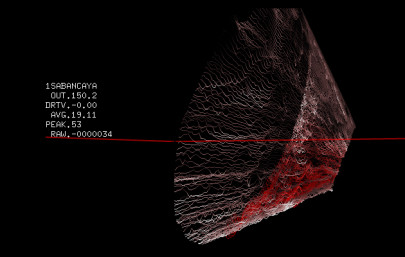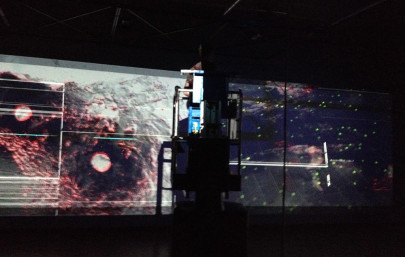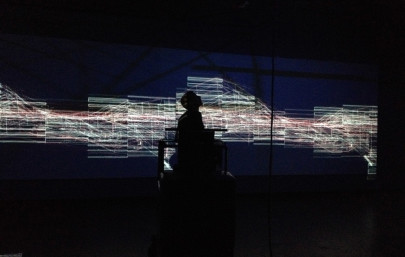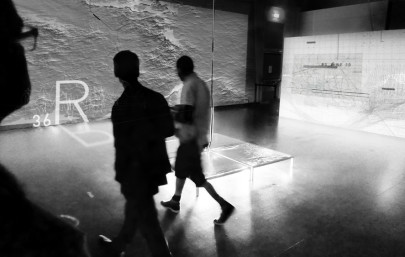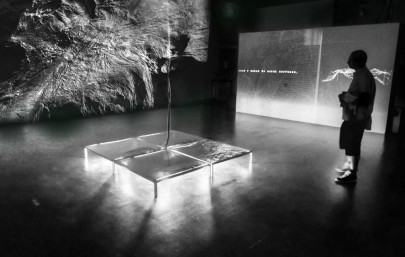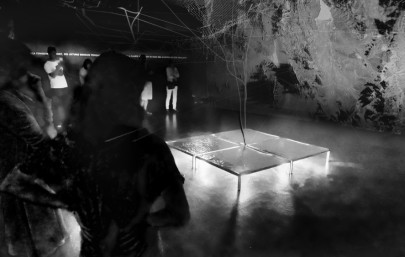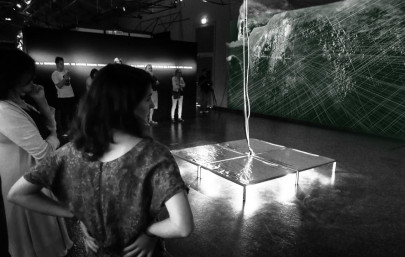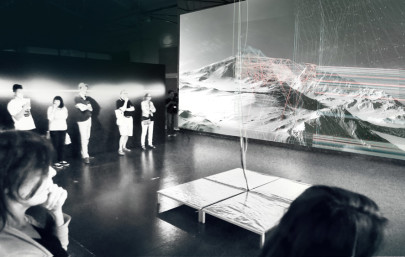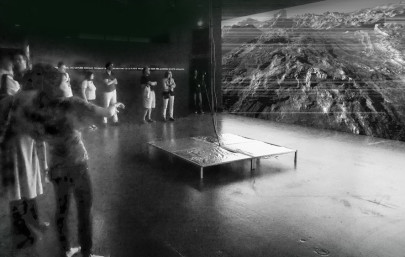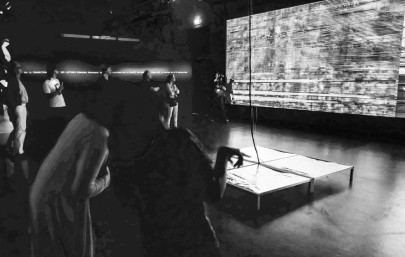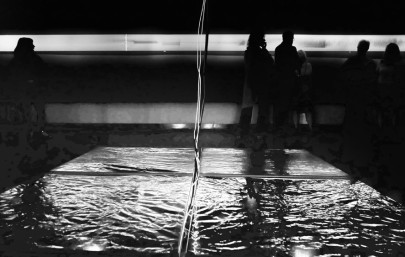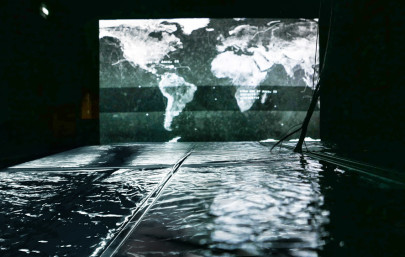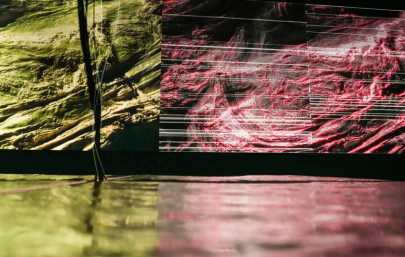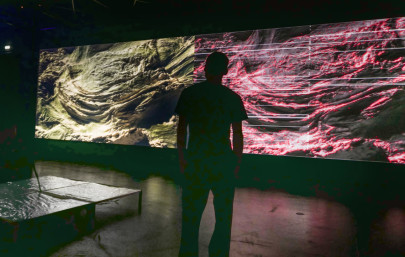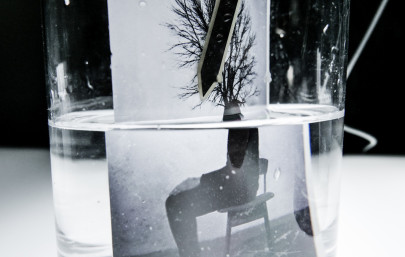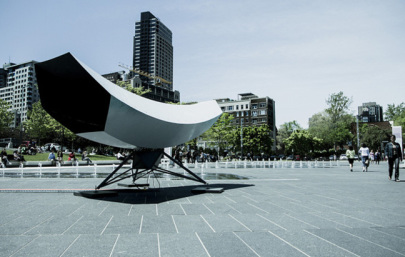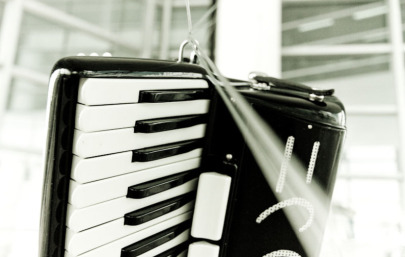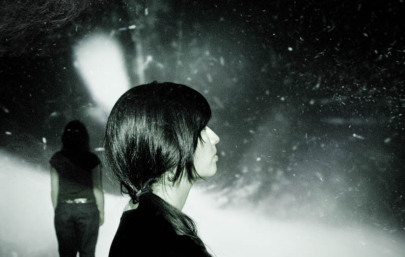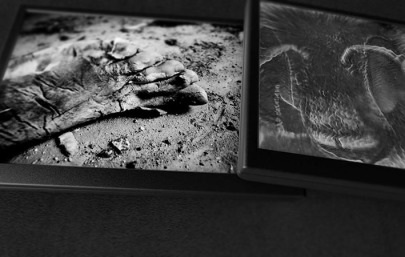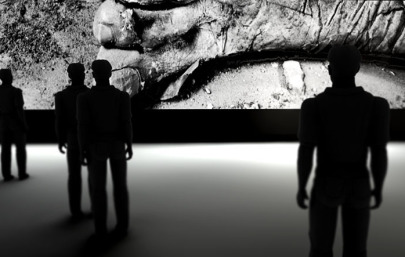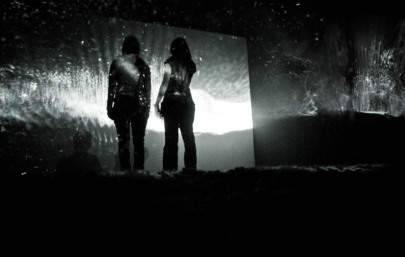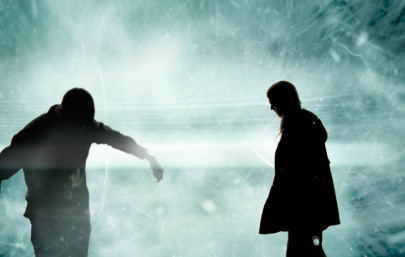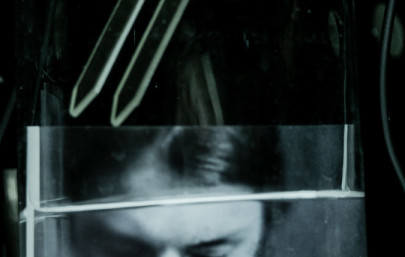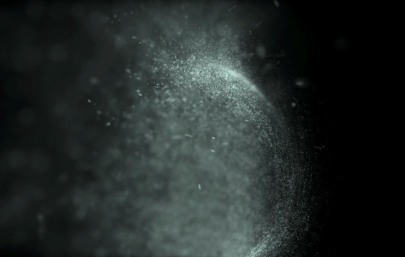SOLO EXHIBITION
6 installations connected to the Peru territory
real data from Volcano, wind and Sea.
April-May-June-July 2017
Herman Kolgen – EXPANDED TERRITORIES @ ESPACIO – Fundación Telefónica (By Nathalie Bachand)
For many years, the internationally renowned Canadian artist Herman Kolgen has explored through digital technologies the notion of territory and the strength relationships that take place in it. Kolgen is interested in the territory not only as an external physical space but also as the place of human interiority, with its feelings and intangible states. The territory appears as the place of tension where attraction and repulsion generate unexpected dialogues. As atoms that shape bodies and matter, this tension creates a fertile resistance that opens up the possibility of expressing active forces that drive the artist’s works. Herman Kolgen’s artistic process is also characterized by a recurring concern for the impact man has on the territory and conversely, that the territory has on man. His works challenge the reach and the repercussions, at different degrees, of the gestures and actions we engage in daily. Technologically complex and very sensitive visually, his generative video and photo installations, as well as his audiovisual performances tell us, among others, how digital tools influence our relationship with the world and our reading of our immediate surroundings. If we are ontologically related to the universe in a way that, in essence, we do not understand, there is no doubt that at the scale of our daily lives we are increasingly aware of the way in which the digital operates as an interface between reality and the intentions we project upon it. Thinking about these questions, EXPANDED TERRITORIES gathers for this occasion six works in which sound and image are revealed through complex technological interrelations. A truly audio-kinetic sculptor, Herman Kolgen creates using digital data works of an almost bewildering esthetic and mathematic finesse.
–
AIRFLOW
[External wind sensors connected through the inside to a wind flow interpretation system in real time on an LCD screen, activated by a motorized digitizer]
Airflow is a generative installation that connects the internal and the external. On one side an external wind turbine, located in the Fundación Telefónica entrance captures wind speed and sends this data to an LCD inside. This wind data is conveyed inside through the slow lateral movement of a vertical luminous bar that scans the screen while passing before it. The data coming from the wind turbine appears then on the screen as visual particles that are afterwards re-scanned and activated by the second passing of the vertical bar revealing the display of the amplitude and turbulence of the wind data. As wings, the particles are revealed in a form that gradually reduces their propulsion to fix it in a final image – that is then scanned again repeating the same capture, retransmission and display procedure.
–
SEISMIK GEOPOLE
[Volcano visual data report transmitted as vibrations to metallic plates]
Presented as a generative audiovisual installation, Seismik Geopole is a system between the external and the internal through the transmission of seismic, weather and environmental data. Captured in real time, the transmitted data is determined by a computer system that tells us the nature and origin of the data and then translates it visually, simultaneously, onto two screens. Besides these multiple capture sources, the data of four volcanos in the region is captured and then re-transmitted also in real time to metallic plates. This re-transmission procedure is a re-interpretation of data as vibrations that are then transmitted to the plates generating sounds and movement. This work that evokes the underground invisible movement of tectonic plates is a vision of environment language and of what it communicates to us.
SEISMOGRAFF
[Seismographic data drawing on tracing paper]
As a complement of Seismik Geopole, Seismograff is a work on paper presented on a seismographic roll that provides a visual interpretation of geo-localized data. By questioning the status of truth that we attribute generally to digital data, the work claims here its rights as a representation of reality.
–
DUST OPACIT TIME
[Translucent macro photos of images of dust]
The Dust Opacit Time photo installation is a two dimensional version of the Dust audiovisual work created in 2010. Presented as thin translucent photographic film overlaid on very thin luminous plates, this work evokes the lightness of dust and its almost immaterial aspect. Paradoxically, the image overlapping – without regards to how light these are due to what they represent – suggests a quasi-opacity and even a possible though nonetheless fleeting solidity of this matter. The idea of an opaque temporality meaning a space time – that of photographic capture – that wouldn’t allow the light through the image is revealed, and resonates with Aftershock (video installation that is located in front of it), in which the dust covers the rugged territories of our human interactions.
–
AFTERSHOCK
[LCD systems and audio data]
In this show’s context, the Aftershock audiovisual performance is presented as a video tryptic projected through a three-segment display device. As irregular polygons, lying horizontally, the three structures seem to emerge from the wall through thin viewers and allow us to see at the very end three series of Aftershock videos with deafened white noise. While the formal aspect of the display device might evoke the sharp shape of pocket or a bunker’s opening, what is seen at the other end suggests an inversion of the internal towards the external: all of a sudden we are outside and looking inside. Through nuclear explosion sequences, architecture collapses, large-scale destruction, this work expresses the tragic calm of a post humanity filled with paradoxical poetry. Ashes and dust fix and sublimate the landscape at the same time.
–
LIQUID MEMORY
[Reservoirs filled with salt water, sensors, photographs, and audio data]
Liquid Memory is a photo installation in which we are presented with semi-hung photographs in the space, which are then put in reservoirs filled with water in the ground. Here time acts upon the work: in contact with water the images alter, the paper is dissolved until it becomes pulp to finally break. As memory that is progressively erased and is transformed with the passing of time, photographs – that are in themselves samples of the past – subtly absorb the effect of exposure in their own materiality. Besides these images, there is a sound dimension that is the connection vector with interiority. While mixing almost muttered sounds of human voices with the audio interpretation of water-related data – especially the humidity rates in the reservoirs captured through sensors – these sounds plunge us into unknown territories that each of us keeps inside.
